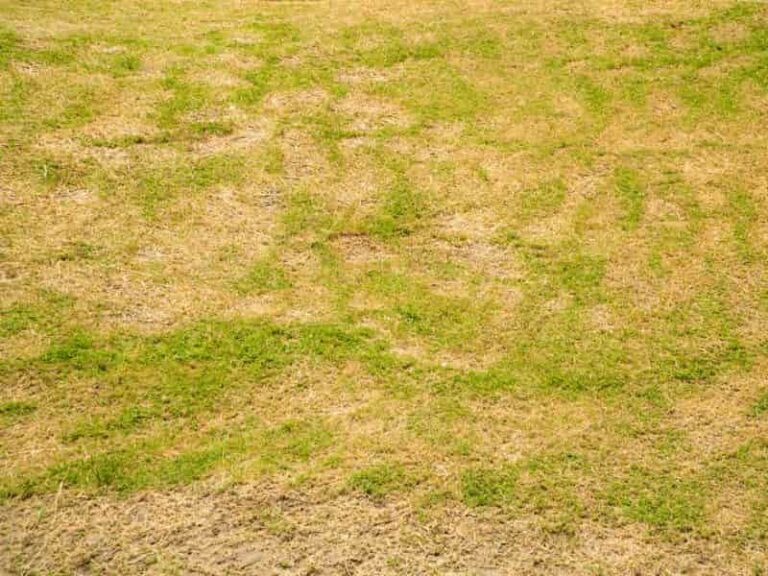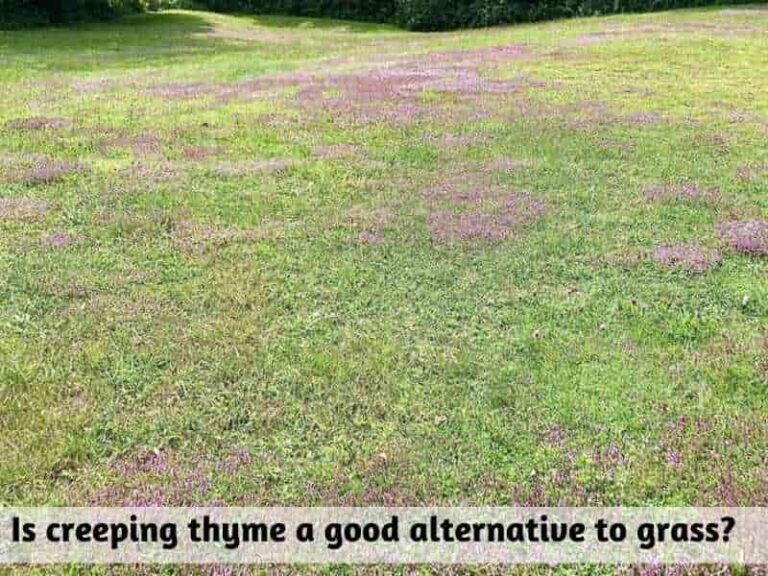How to Remove Old Lawn and Reseed
If weeds have overrun your lawn and the grass appears beyond redemption, it’s best to start afresh. You’ll have to remove the old turf and reseed the lawn. The steps involved in such a project are labor-intensive and time-consuming. However, the joy of a lush, new lawn makes it worth the effort.
Get a sod cutter to cut up chunks of the old lawn. Use a grape hoe for a smaller lawn. Till the area to loosen compact soil clods before applying weed killer. Ensure your soil meets optimum conditions before spreading new seeds. Apply the correct amount of fertilizer and water and continue tending the new seed until you see positive progress.
Do I need to remove old grass before seeding?
Most homeowners prefer overseeding the existing turf to rejuvenate their lawns. However, overseeding to revive your lawn is only recommended if there are minimal bald spots or if weed invasion is mild. A complete overhaul is the better option for lawns that are badly thinning and dying out, with several brown spots, bare patches, and severe weed invasion.
Note: Landscaping professionals recommend a complete turf renovation if the layer of dead grass on the lawn is six inches or more.
A complete renovation requires you to remove all the old grass before replacing it with new grass seed or sod. This method allows you to eliminate all weeds and dead grass that would otherwise hinder the growth and establishment of the new grass seedlings. Moreover, tearing up the existing lawn allows you to make amendments to the lawn soil to create optimal growth conditions for the new turf.
As a rule of thumb, a lawn warrants a complete makeover if weeds and unwanted turf grasses take up 60% of the lawn or more. However, if you’re still unsure whether to overseed your current lawn or start over, consider consulting a lawn care professional.
How to tear up a lawn and reseed it
To successfully kill-reseed your existing lawn, first get rid of the existing grass by smothering, solarization, herbicide application, or digging. Then, you can improve the quality of the bare soil with fertilizer and pH amendments. Finally, reseeding the lawn through traditional sowing or hydroseeding.
Smothering the grass
Smothering or sheet mulching kills grass and lawn weeds by cutting off their access to sunlight. The grass is covered using cardboard, newspaper, or black plastic sheets. The sunlight blockage hinders photosynthesis. Organic mulch is sometimes piled on the cover material to boost the solar blockade.
Smothering a lawn is a slow method, as it takes up to 2 months to completely kill all the lawn vegetation down to the roots. However, unlike using herbicides, it has a low environmental impact. Additionally, the dead grass decomposes to add nutrients to the soil.
Note: Unlike methods like tilling, smothering doesn’t involve lots of manual labor, except for the mowing at the start. It’s advisable to mow the lawn short before placing cardboard to smother the grass.
Kill the lawn via solarization
Solarization is a method that channels solar energy to ‘fry’ grass, weed seeds, and any pathogens present in the lawn soil. The best time to solarize your existing lawn is when sunlight is most intense in the summer.
This method of killing a lawn involves mowing the lawn short, then covering the lawn with plastic sheeting. Transparent sheeting is more desirable to allow more sunlight to pass through to the vegetation underneath. Place rocks at the edges of the plastic sheet to secure it in place.
It takes 6 to 8 weeks to kill lawn vegetation via solarization completely. Solarization is slow. Furthermore, it indiscriminately kills harmful soil organisms and beneficial ones, too.
Solarization relies on weather patterns, making it an unreliable process. Still, solarization has low environmental impacts compared to herbicide applications.
Kill the lawn using herbicide
Herbicide application is a good option if you want to get rid of your existing turf as fast as possible. A non-selective, post-emergent herbicide clears up all the lawn’s grass, weed, and shrubs. Most premium quality herbicides can clear existing turf within ten days post-application.
Note: For lawns with well-established grasses, repeat applications may be necessary to kill all the grass
Using chemical herbicides to get rid of your old lawn is less labor-intensive than digging it up. Also, it works quicker than smothering or solarization. However, these herbicides have a negative environmental impact whenever the chemicals leach into water bodies.
Roundup is one of the most effective non-selective herbicide products for clearing a lawn. With glyphosate as the primary active ingredient, Roundup kills off all types of vegetation it comes into contact with. Glyphosate has fewer residual effects in the soil than most herbicides.
Tear up the lawn by digging it
You can also do away with your existing lawn by digging it up using a grubbing hoe, sod cutter, or heavy-duty tiller. It’s best to dig up your lawn after light showers or after watering it, as it’s easier to dig or cut through moist soil.
A sod cutter cuts the existing turf just underneath the grade. This tool is only recommended for turf grasses with shallow roots. After removing the old grass, till the soil to relieve compaction and allow deeper rooting of the new incoming grass.
The problem with digging up a lawn is that it brings weed seeds in the soil closer to the surface, increasing their chances of germination. Moreover, sod cutters cut off a significant portion of the topsoil, resulting in the loss of valuable nutrients if you dispose of the cut-off sod strips.
Note: You can leave the cut-off on the lawn to compost. However, you’ll need to wait longer before tilling and seeding.
Prepare the soil for reseeding
After getting rid of the old grass on your lawn, don’t rush to sow new grass seed. This is the best time to amend and enrich your lawn soil while also getting rid of any weed seeds whose sprouting chances have been boosted by the tilling process.
First, apply a pre-emergent herbicide to suppress any weed seeds present in the lawn soil. Then, amend the soil by adding a starter fertilizer. Alternatively, you can add compost. It adds nutrients to the soil and relieves soil compaction for better drainage and deeper root establishment.
Also, you can raise the soil pH by adding lime if it is too acidic. The final important preparation step is to level out the bare soil using a rake before seeding.
Note: This is also a great time to fix grading issues, such as sloping the lawn away from your home’s foundation.
Reseed the lawn
After removing the old turf and prepping the soil, it’s time to reseed your lawn. The best time to sow new grass seed depends on the turfgrass variety. For instance, warm-season grasses are best planted in the spring, while cool-season grasses are best planted in the fall.
If your old grass was thinning out due to poor soil conditions, you could reseed with the same grass seed species now that you’ve amended the soil. However, if the grass is dying out because it’s a variety that’s not adapted to your region, consider replacing it with a grass seed species more suited for your area’s environmental conditions.
To ensure grass seeds are broadcast evenly over the lawn, use a lawn spreader. Meanwhile, a water roller will help push the seeds further into the soil and hold them in place. This helps prevent the seeds from being washed away by rainfall or fed on by birds.
Note: Hydroseeding, the spreading of a slurry (grass seed mix containing water, fertilizer, soil amendments, and mulching) over the bare lawn using a high-pressure garden hose, is an excellent alternative to seeding.
After sowing the seeds, cover the lawn with straws to ensure good moisture retention. Alternatively, you can add a thin topsoil layer, boosting seed to soil contact.
After seeding the lawn, water lightly every day until the turf is well-established. It should take about three weeks for most turf grasses.
References
- Eve Werner, University of California- Agriculture and Natural Resources: Sheet Mulching
- David K. McDonald, Seattle Public Utilities: Ecologically Sound Lawn Care for the Pacific Northwest



